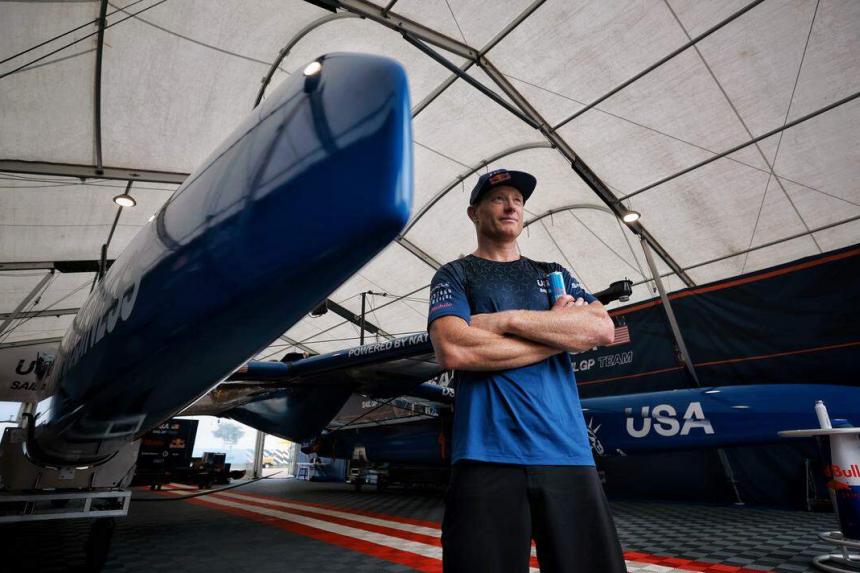SINGAPORE – Long, lean and muscled, Jimmy Spithill, United States SailGP team chief executive and driver, is personable and chatty in person and seems nothing like his nickname, Pitbull.
While the Red Bull athlete smiles when asked about the moniker – given for his aggressive tactics – it is fitting to some degree, as under this friendly demeanour lies a tenacious, hardened competitor.
In an interview at the Team USA technical base at Changi Exhibition Centre on Wednesday, Spithill told The Straits Times: “A lot of my teammates would probably tell you that I’m really calm on the boat...
“If I see an opportunity, then I’m going to go for it. At this level, if you get an advantage, you have to go for the knockout.”
The 43-year-old Australian is in town for the Singapore Sail Grand Prix, which will see nine teams competing at East Coast Park on Saturday and Sunday.
The Republic is the first South-east Asian country to host a leg of the US$1 million (S$1.34 million) hydrofoiling series as part of a three-year deal.
SailGP is into its third season and features the world’s best catamaran sailors.
Spithill may be a two-time winner of the prestigious America’s Cup, but he considers racing in SailGP to be the most interesting experience of his illustrious career.
“The technology, the sport have taken such huge steps. Not only that, but just seeing how many non-sailors are now watching and tuning in as fans,” said Spithill, pointing to broadcast numbers in the United States.
A CBS broadcast last October that showcased the France SailGP was the most watched sailing event on US television in over 30 years, averaging 1.609 million viewers.
Spithill, who at 20 became the then-youngest helmsman in the America’s Cup, believes that racing has become much more exciting over the years.

Foiling technology has been a game changer, he said, as it has enabled boats to travel “three to four times the speed of the wind”. The F50 catamarans used in SailGP can hit speeds of nearly 100kmh.
He said: “It really takes a much different breed of sailor and athlete to sail these boats – the decisions come very, very quickly.
“There was never let’s say the risk in the past because you’re going quite slowly.
“With these boats, there’s risk – you’re going very, very fast and if you make an incorrect decision or mistake, there will be a consequence.”

Making split-second decisions in high-pressure situations is a skill that Spithill, who skippered Team USA to a comeback win at the 2013 America’s Cup, has mastered.
He continues to hone it by pushing himself to the limit in other sports such as boxing and Brazilian jiu-jitsu.
Boxing keeps him on his toes as “you’ve got to be good on your feet, there will be a consequence if you get it wrong”.
He added: “I like to get myself to a point where I’m under stress and fatigued and I’ve got to make decisions, because that’s what I think is the best way to train for this type of racing.”
Brazilian jiu-jitsu is a recent foray which he likens to chess, adding: “The good guys are able to think multiple steps ahead.
“With so many boats going very fast, you can’t just deal with the situation that’s happening, you have to think about that and the next one.”
Spithill also does freediving and stand-up paddling. In 2014, he competed in the Molokai-2-Oahu paddleboard World Championships where he covered 32 nautical miles (59.26km) in six hours.

This adrenaline-loving athlete is also glad to see more regular competition in the form of SailGP, which has 11 stops around the world this season.
He said: “There was no regular season so a lot of the big events in the sport, whether it’s the America’s Cup or the Olympics, they’re every four years... for the most part, you never knew when the next race was going to be.
“This is the first time where this is much similar to mainstream sports. So now you can really plan and you’ve got much more momentum from a fan point of view and athletes as well.”

